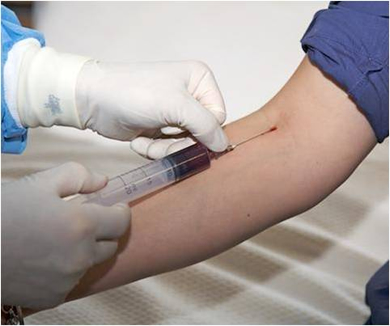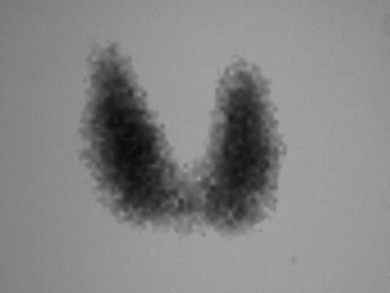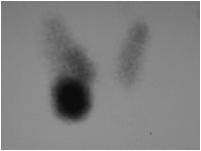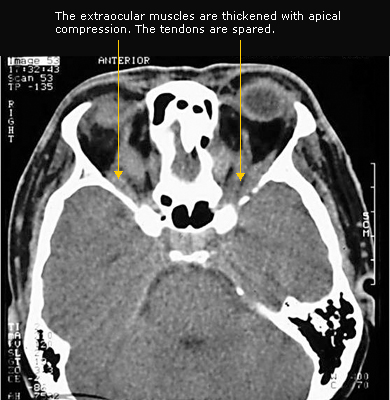Click on the links below.
Standard investigations for thyrotoxicosis include blood tests for:
- TSH; usually suppressed
- T4; usually raised
- +/- T3
Always check the patient’s full blood count (FBC) and consider:
- Thyroid peroxidase Ab
- Thyroid stimulating hormone receptor (TSHr) stimulating Ab
- C-reactive protein
Some patients will also need :

Click on the links below.
Standard investigations for thyrotoxicosis include blood tests for:
- TSH; usually suppressed
- T4; usually raised
- +/- T3
Always check the patient’s full blood count (FBC) and consider:
- Thyroid peroxidase Ab
- Thyroid stimulating hormone receptor (TSHr) stimulating Ab
- C-reactive protein
Some patients will also need :
- A thyroid uptake scan in certain specific circumstances
It is exceptionally useful to:
- Assist with the differential diagnosis of any patient with biochemical thyrotoxicosis
- Identify a ‘hot’ or ‘hyperfunctioning’ nodule in the context of any patient with thyrotoxicosis or subclinical hyperthyroidism
- Detect retrosternal or ectopic functioning tissue
- Very occasionally, a CT scan of the extraocular eye muscles

Fig 1 This is an Iodine-123 thyroid scan in a patient
with Graves' disease. Tracer uptake is uniform throughout the
gland
(Reproduced with permission from
eMedicine.com)

Fig 2 This is an Iodine-123 scan in a patient with a
palpable nodule in the right neck, a low serum level for thyrotropin, and
a slightly elevated serum level of free triiodothyronine. The
autonomously functioning (‘hot’) nodule is clearly seen and the image
contrasts significantly with that in Fig 1
(Reproduced
with permission from eMedicine.com)
Click on the links below.
Standard investigations for thyrotoxicosis include blood tests for:
- TSH; usually suppressed
- T4; usually raised
- +/- T3
Always check the patient’s full blood count (FBC) and consider:
- Thyroid peroxidase Ab
- Thyroid stimulating hormone receptor (TSHr) stimulating Ab
- C-reactive protein
Some patients will also need :
- A thyroid uptake scan in certain specific circumstances
- Very occasionally, a CT scan of the extraocular eye muscles

(Reproduced with permission from eMedicine.com)